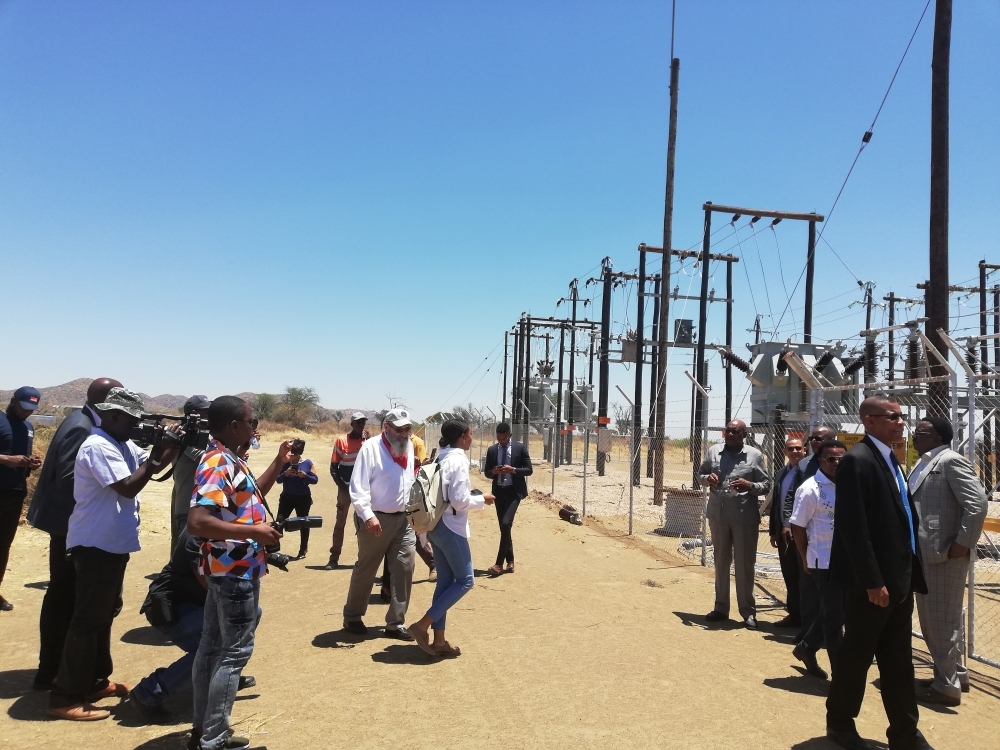Electricity upgrade for Osona Village
Thanks to the Osona Village electricity upgrade from 1 MVA to 2 MVA, improved reliability, reduced network constraints, fewer unplanned interruptions, and the expansion of the network to cater for future developments can be expected.“Additionally, the upgrade will attract further investment and stimulate economic growth through job creation. That is why this development is so necessary. Without it, the prospects of growth for you as individuals, your businesses and the community are greatly hampered.”
This according to mines and energy minister Tom Alweendo.
He made these statements in a speech read on his behalf by executive director, Simeon Negumbo.
According to Alweendo: “I am told that to date, the provision of electricity to this fast-growing community has cost the developer, Preferred Land Development Holdings, over N$11 million, which includes bulk infrastructure, households, streetlights, businesses, and public amenities. The existing infrastructure will eventually be transferred to Okahandja Municipality at no cost.”
He added that the completion of this project will bring much-needed social benefits that can be harnessed into tangible economic activities. “
However, he warned that “the investment and effort poured into this infrastructure will be wasted if upstream generation planning, sound regulation and transmission backbone infrastructure investments are not made”.
Namibia currently imports between 50 and 70% of the electricity we consume annually.
“I have insisted and will keep pressing that this is not a tenable situation because some of this electricity is imported from systems that are themselves constrained,” he said.
He added that his ministry, in conjunction with the Electricity Control Board (ECB) and NamPower, is responsible for closing this import gap, “but must do so in the least costly manner. This is done primarily through what we call the National Integrated Resource Plan (NIRP 2022).
“Maintaining the balance between self-reliance and affordability is a dilemma, and we’ve always wanted to be self-reliant. But building generation plants in Namibia was historically costlier than importing, especially given our lack of proven commercial hydrocarbon resources. Building such plants, for which we will have to import the resource anyways, would make end-use electricity less affordable, which comes with its socio-economic implications,” he said.
However, he said that over the past few years, this trend has been changing. “Generating power from solar and wind, two resources that Namibia is generously endowed with, is now cheaper than hydro, coal, oil and gas-powered generators. And we have, as a country, taken full advantage of this.
“To date, about 30% of our electricity comes from renewable sources, mainly solar. But as you know, solar and wind are only sometimes available. And we are already reaching levels of solar and wind penetration that could cause instability on our national grid.”
He said that the latest NIRP, which was recently approved by Cabinet, is designed with this balance in mind. “We must take advantage of our abundant solar and wind resource. However, the plan is cognizant that we must invest in transmission infrastructure and battery storage technology to take advantage of our renewable energy resources fully.”
However, more information on this would be made available in due course.




